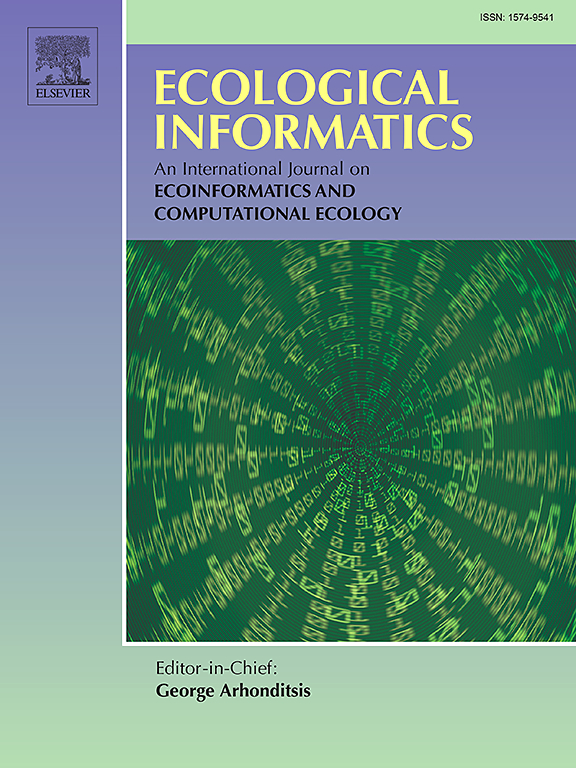SegmentR:深度学习自动分割与R接口
IF 7.3
2区 环境科学与生态学
Q1 ECOLOGY
引用次数: 0
摘要
生物数据的日益数字化产生了规模空前的生物多样性数据。然而,从这些图像中提取表型信息对生物学家提出了独特的挑战。手动图像分割既耗时又主观,而现有的自动化解决方案通常需要丰富的编码经验或使用实践生态学家和进化生物学家通常不使用的编码语言。在这里,我介绍了SegmentR,这是一个用户友好的软件包,它利用了两个最先进的深度学习模型——GroundinDINO和一个高效版本的Segment Anything Model (SAM)。SegmentR包提供了一个基于r的接口,使没有编码经验的生物学家更容易使用它。SegmentR允许用户加载图像,根据文本提示自动分割图像,并提取感兴趣的区域用于下游分析。该软件包包括基本的可视化和数据处理功能,以促进对结果的解释和与现有分析工作流程的集成。本文介绍了SegmentR的功能,并通过示例展示了它的实用性,包括分离鱼类解剖,批量处理花卉图像进行颜色分析,以及对博物馆标本进行分割。本文章由计算机程序翻译,如有差异,请以英文原文为准。
SegmentR: Deep learning for automated segmentation with an R interface
The increasing digitization of biological data has generated biodiversity data at an unprecedented scale. However, extracting phenotypic information from these images poses unique challenges for biologists. Manual image segmentation is time-consuming and can be subjective, while existing automated solutions often require extensive coding experience or utilize coding languages not typically used by practicing ecologists and evolutionary biologists. Here, I present SegmentR, a user-friendly software package that leverages two state-of-the-art deep learning models – GroundinDINO and an efficient version of the Segment Anything Model (SAM). The SegmentR package provides an R-based interface, making it more accessible to biologists without coding experience. SegmentR allows users to load images, automatically segment them based on text prompts, and extract regions of interest for downstream analysis. The package includes basic visualization and data processing functions to facilitate interpretation of the results and integration with existing analytical workflows. This paper introduces SegmentR's features and demonstrates its utility through examples including isolating fish anatomy, batch processing flower images for color analysis, and segmenting museum specimens.
求助全文
通过发布文献求助,成功后即可免费获取论文全文。
去求助
来源期刊

Ecological Informatics
环境科学-生态学
CiteScore
8.30
自引率
11.80%
发文量
346
审稿时长
46 days
期刊介绍:
The journal Ecological Informatics is devoted to the publication of high quality, peer-reviewed articles on all aspects of computational ecology, data science and biogeography. The scope of the journal takes into account the data-intensive nature of ecology, the growing capacity of information technology to access, harness and leverage complex data as well as the critical need for informing sustainable management in view of global environmental and climate change.
The nature of the journal is interdisciplinary at the crossover between ecology and informatics. It focuses on novel concepts and techniques for image- and genome-based monitoring and interpretation, sensor- and multimedia-based data acquisition, internet-based data archiving and sharing, data assimilation, modelling and prediction of ecological data.
 求助内容:
求助内容: 应助结果提醒方式:
应助结果提醒方式:


